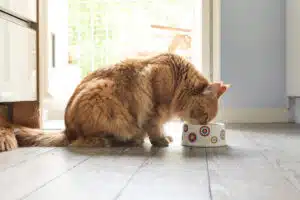Depending on the type of cat you have, you may want to consider whether or not your cat should wear a collar. These types of collars can be used for safety, flea prevention, and for identification. There are also decorative collars that can be used for your pet.
Safety
Whether you have an indoor cat or one that goes outdoors, a collar is a safety measure that should not be ignored. A collar not only keeps your cat from getting lost, but it also gives the added benefit of being visible to other animals and humans. A collar is also a good way to reunite your cat with you in an emergency.
There are several kinds of cat collars, ranging from those made from colorful materials to those that are made from stretchy material. There are also several models that have a bell to alert other animals and humans to your cat’s presence.
A cat collar can be a good thing, but it can also be a bad thing. For example, the collar you choose may get stuck on a tree branch or bush and cause your cat to become injured. It can also put your cat at risk of choking.
Identification
Using cat collars for identification is an effective method of ensuring your feline’s safety. Many cats are prone to getting lost while outdoors. For this reason, it is important to invest in a quality collar.
Besides providing identification, collars are also a good way to make a fashion statement. Cat collars come in all shapes and sizes. Some are simple, while others are elegant and stylish. In choosing a collar, it is important to consider your pet’s personality and preference.
When choosing a cat collar for identification, it is important to pick a product that fits your pet’s lifestyle. This includes the type of material it is made of. Choose a material that is comfortable for your pet.
The best way to determine if a collar is right for your pet is to try it on. This is a good idea especially if your pet has not worn a collar before.
Flea prevention
Despite the fact that there are plenty of safer alternatives on the market, some cat owners still prefer to use flea collars to prevent their cats from becoming infested with fleas. These collars contain active ingredients that target various stages of the flea life cycle, killing adult fleas and inhibiting the development of flea eggs.
Flea collars for cats come in various sizes and designs. Some work by emitting a strong insecticide odor, while others work by spraying a chemical into the cat’s skin. There are even collars that can be adjusted to fit different neck sizes. Ensure that you read the label carefully before using any product, as some products may be toxic to cats.
Some of the flea collars for cats contain ingredients such as insect growth regulators (IGRs). IGRs prevent the development of flea eggs and larvae.
Decorative collars
Decorative cat collars are created to act as a decoration for your pet. They come in a variety of different styles, including woven designs, nylon, and leather. Some collars can be embellished with rhinestones, bow ties, and other decorative accessories. They range in price from a few dollars to more than $1500.
Cat collars aren’t just stylish; they’re also very helpful. They can provide your pet with identification tags, which tell people where to find your pet. Some collars can also contain GPS trackers.
Some decorative cat collars have bells, which alert other animals to the presence of your pet. Bells are especially helpful if your cat is an outdoor cat. Many cats wander far from home. They can also warn other animals of a predator.
Disadvantages
Despite the benefits of using collars for cats, there are also some downsides. Cats may get injured when trying to escape from collars, and they may also get caught on objects or fences. Some collars are too heavy for cats to wear.
Collars with bells can also put cats in dangerous situations. Some collars have a breakaway mechanism, but this isn’t always reliable. They can also get caught on objects like hooks and bushes. The bells should be placed in a wide groove so that they won’t snag on the cat.
Other downsides of using a collar for cats include the potential for the collar to become lost or tangled. In some cases, a collar may be too tight or too loose, so that it could snag on a cat’s paw or leg.














